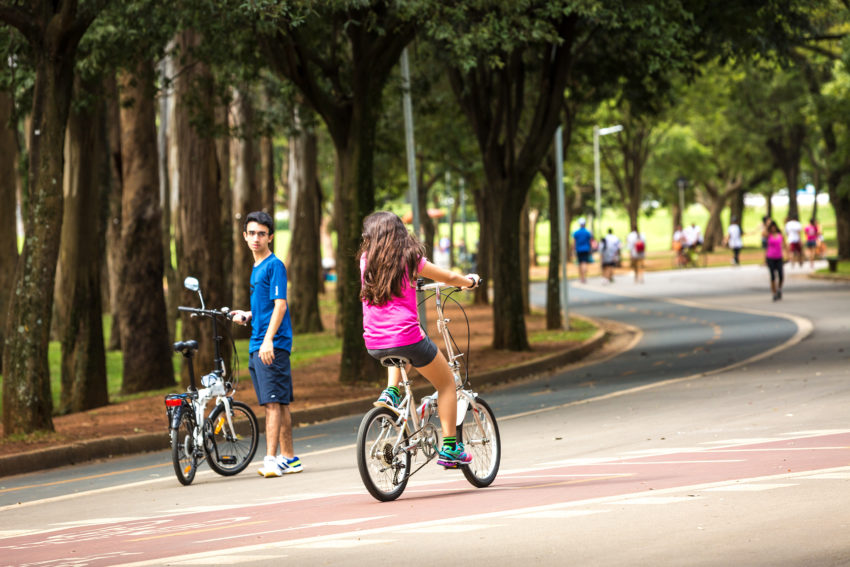
Share On Social!
Teens need 60 minutes every day of moderate to vigorous intensity physical activity to reduce their risk of heart disease, cancer, and diabetes.
Yet only one in four high school students (26.1%) met this recommendation, according to new CDC data.
And the rates of physical activity were often worse among Latinos.
Why? What can we do?
The Data
High school students in the U.S. are not on a good health trajectory, according to CDC’s new Youth Risk Behavior Survey released on June 15, 2018.
The survey is part of the CDC’s Youth Risk Behavior Surveillance System. The system monitors health-related behaviors, usually developed in childhood and early adolescence. These behaviors contribute to the leading causes of early death among youth and adults in the United States.
Today we’re examining the CDC’s new data on physical activity, after recently tackling nutrition and obesity, sleep, and asthma among Latino youth.
Physical Activity and Latino Youth
The new CDC data show disparities in physical activity by race/ethnicity, sex, and grade in school.
Latino students are less physically active than white students, spend more time on screens, and are more obese, but more Latinos go to P.E.
- More Latino (16.1%) and black (19.8%) high-school students than white students (13.6%) did not participate in at least 60 minutes of physical activity on at least one day in the past week. Among female students, more Latinas were not physically active for a total of 60 minutes on at least one day in the past seven days (20%), compared to white female students (16.7%).
- Fewer Latino (44.9%) and black (42%) high-school students than white students (48.7%) were physical active for at least 60 minutes on five or more days in the past seven days. Among male students, fewer Latinos were physically active for 60 minutes on five or more days in the past seven days (52.6%), compared to white male students (59.4%). Among Latino students, fewer Latinas were were physically active for 60 minutes on five or more days in the past seven days (36.9%), compared to Latino male students (52.6%). Among 12th-grade students, fewer female 12th-grade students were physically active for 60 minutes on five or more days in the past seven days (32.2%), compared to male 12th-grade students (51.2%).
- Fewer Latino (25.8%) and black (24.5%) high-school students than white students (27.1%) were physical active for at least 60 minutes on all seven days in the past week. Fewer female students were physically active for 60 minutes on each of the past seven days (15.7%), compared to male students (35.3%). Among male students, fewer Latino students were physically active for 60 minutes on each of the past seven days (33.3%), compared to white male students (36.7%). Among Latino students, fewer Latinas were physically active for 60 minutes on each of the past seven days (18.1%), compared to Latino male students (33.3%).
- 46.8% Latina students played video/computer games or used a computer three or more hours a day, compared to 39.6% white female students.
- 34.1% of Latina students went to physical education (P.E.) on all five days in an average week, compared to 22.6% of white female students.
- 40.5% of Latino male students went to physical education (P.E.) on all five days in an average week, compared to 32.2% white male students.
- 18.2% of Latino students were obese, compared to 12.5% of white students. 19.5% of Latino students were overweight, compared to 14.0% of white students.
Let’s Get Involved
 These data are alarming.
These data are alarming.
But they can be used to help children and youth create lifelong healthy behaviors.
Researchers can use results to compare health-related behaviors among subpopulations; assess trends over time; and ultimately, to spur public health actions to decrease health-risk behaviors, reduce health disparities, and improve health outcomes among youth.
State and local health and education agencies can use results to: inform key stakeholders, help develop local health promotion programs, identify the highest risk behaviors around which programmatic funds should be focused, combine with results from other surveys on health topics, review and set goals for children’s health and wellness, measure long-term outcomes related to certain projects or goals, and demonstrate need for public health funding and grant programs.
Schools can implement comprehensive physical activity programs and physical education policies and improve school health services, policies, and practices.
For Latinos, where many neighborhoods have limited safe places to be physically active, according to a Salud America! Research Review.
Solutions are emerging:
- Sports Advocate Opens the Gates for Families to Play at School Parks
- City Leader Rey Saldaña Helps At-Risk Latinos Learn to Swim
- How a New Bridge Rebuilt Community Trust and Pedestrian Safety
- PE Teachers Bring 60 Minutes of Daily Activity to Students Before or After School
- School Principal Steers a Culture of Cycling with Bike Safety and BMX Trails
- Parents Help Save Pool in Low-Income Minneapolis Area
- Texas Border City Turns Bus Stop into Fun Play Place
Learn more ways to improve Latino school health!
By The Numbers
84
percent
of Latino parents support public funding for afterschool programs



